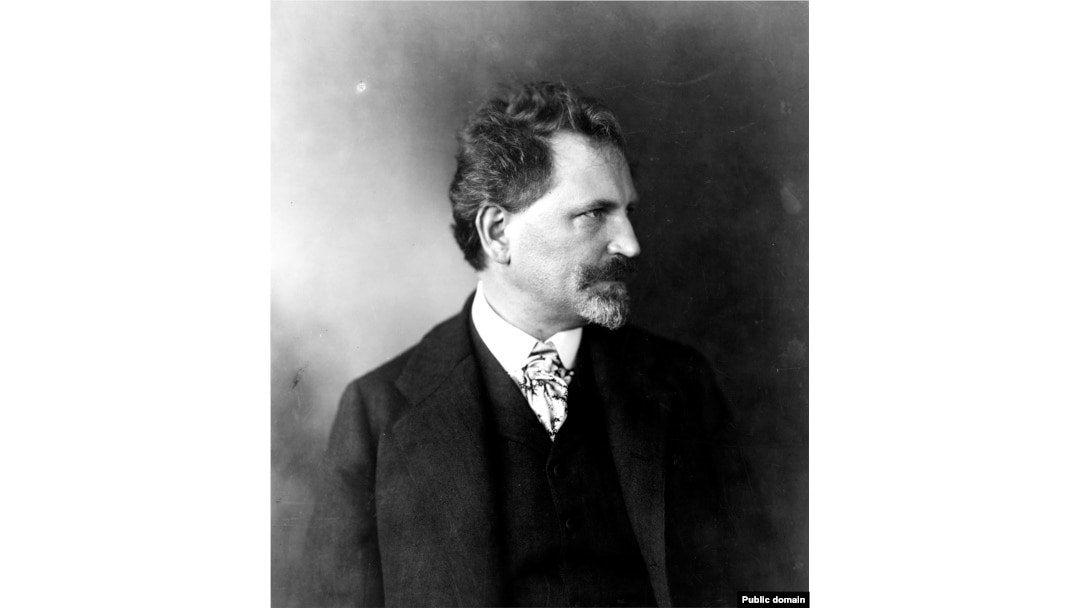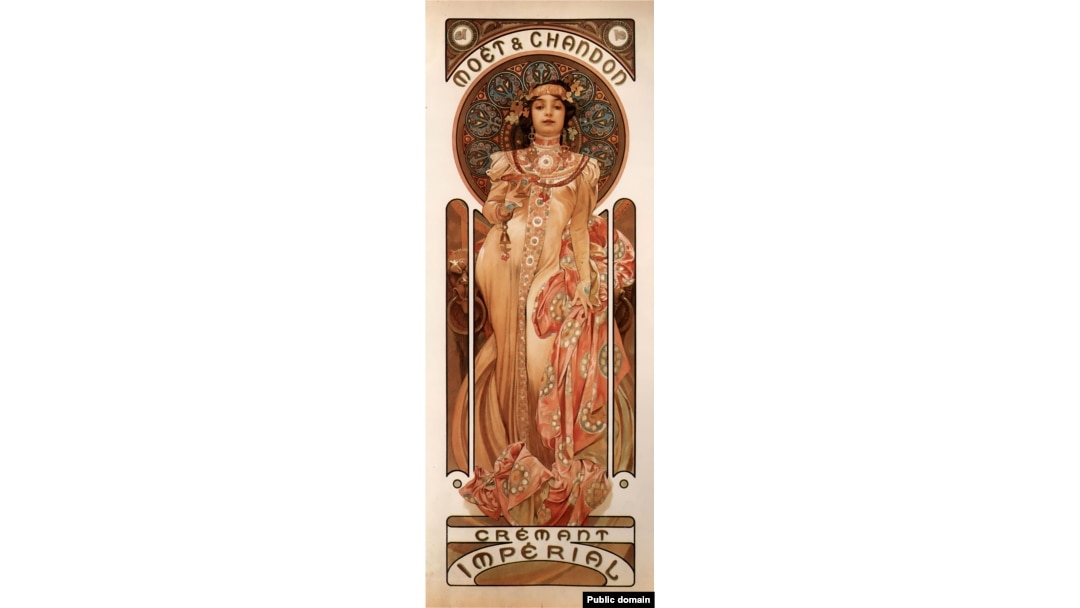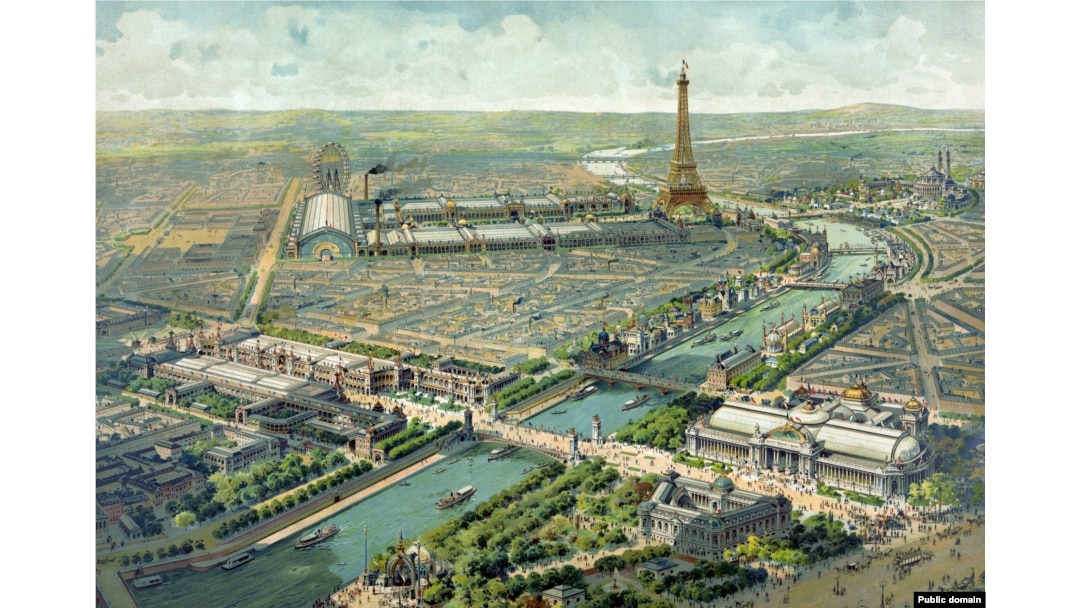How a mission to introduce the world to Bosnia-Herzegovina changed the course of Alphonse Mucha’s life.

Alphonse Mucha (1860-1939) was a Czech artist who first made his name crafting fantastical images of beautiful women for advertising campaigns.

An advertisement made by Mucha when he was based in France
Around the time this 1899 poster for Moet champagne was made, Mucha won a well-paid commission to decorate Bosnia-Herzegovina's pavilion at the 1900 World’s Fair in Paris.

A painting showing the mostly temporary buildings of the Paris Exposition, which was open from spring to autumn in 1900
The expo was a showcase of technical achievements and cultures from 40 countries, who built pavilions for the event.
Bosnian farmers photographed in the 1890s
Before the expo opened, Mucha was provided with a rail pass to travel through Bosnia to research his assignment. He later wrote: “I was not only very satisfied with my journey but also amazed. What I had been looking for so hard all this time I found among the Balkan Slavs.”
A Bosnian woman poses in traditional clothing in the 1890s.
Mucha, whose homeland was also under Austro-Hungarian control, noted that while describing “the glorious and tragic events in [Bosnia’s] history, I thought of the joys and sorrows of my own country, and of all the Slavs.”
The Bosnian pavilion (left) on the banks of the Seine River. The structure was inspired by the distinctive architecture of Bosnia’s Gradacac Castle. On the right is the Hungarian pavilion.
Mucha’s highly paid assignment to introduce Bosnia to some of the 48 million visitors to the Paris Expo was paid for by the Austro-Hungarian Empire, which was eager to present the Balkan territory as a “model colony.”
Models posing for Mucha during the painting of the various friezes that illustrated the Bosnian pavilion
The interior of the Bosnian pavilion after it opened to the public. Beneath the archway, a painting of a Sarajevo marketplace rises above some carpets.
A detail from one of Mucha’s friezes, now on display in the Petit Palais in Paris. The painting is visible at the top of the frame of the previous photo.
Mucha drew from Bosnian fables and history for the large-scale illustrations.
A frieze illustrating the Catholic, Orthodox, and Muslim faiths that are the three major religions of the country. The black spaces are where doorways or windows were located during the expo.
Prehistoric "Bosnians" depicted in a large-scale painting inside the pavilion.
The central painting of the Bosnian pavilion
Although Mucha spent much of his working life in Paris, he always considered himself a Czech artist.
A horseback warrior model surrounded by Mucha’s artwork
Famed actress Sarah Bernhardt described her collaborator friend as "a Czech from Moravia not only by birth and origin, but also by feeling, by conviction, and by patriotism."
Bosnian women weaving inside the pavilion
A report in the Scientific American magazine noted dryly that the pavilion illustrates “not only the history of [Bosnia], but the progress which is being made in the arts and industries, agriculture, education, railroads, etc.”
A Mucha-designed poster made as a souvenir from Bosnia's pavilion
During the assignment to illustrate the heritage of his fellow Slavs, Mucha later described a moment of revelation: “It was midnight and there I was all alone in my studio…among my pictures, posters, and panels. I became very excited. I saw my work adorning the salons of the highest society or flattering people of the great world with smiling and ennobled portraits. I saw the books full of legendary scenes, floral garlands, and drawings glorifying the beauty and tenderness of women.
"This was what my time, my precious time, was being spent on, when my nation was left to quench its thirst on ditch water.… As I stood there looking at all these things, I swore a solemn promise that the remainder of my life would be filled exclusively with work for the nation."
A gigantic painting from Mucha's famous Slav Epic
After his widely celebrated work in the Paris Expo, which won him the Legion of Honor from the French government, Mucha hunted out a patron to fund the Slav Epic, a giant sequence of paintings depicting the history and mythology of the Slavic race. He began the epic in 1910 when his country was still part of the Austro-Hungarian Empire and finished it in 1928 -- 10 years after Czechoslovakia gained independence.


